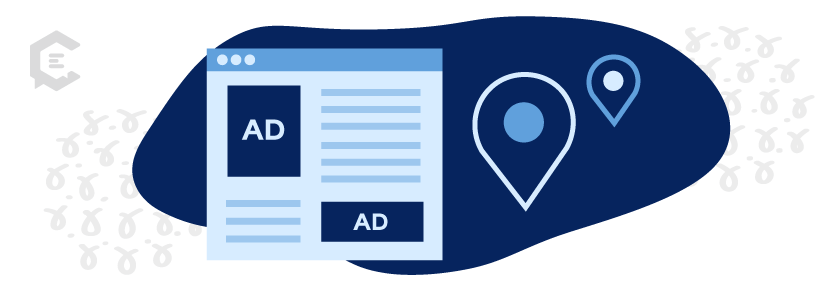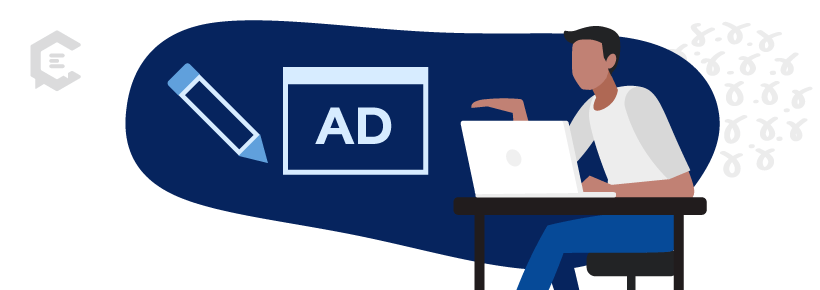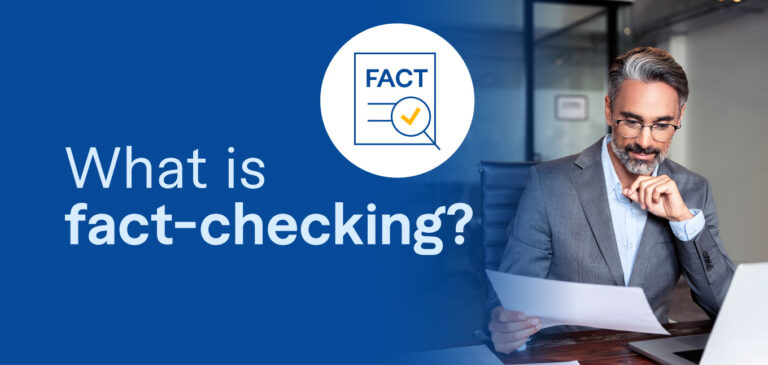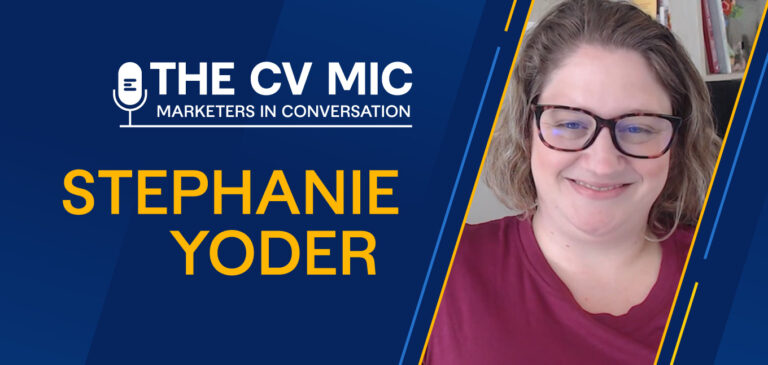What is Native Advertising?
Native advertising blends seamlessly with the surrounding content on a platform. How? By making ads appear more like editorial content than traditional ads. In content marketing, native advertising involves creating and promoting sponsored content that aligns with the style, format, and overall theme of the platform on which it appears.
Instagram’s sponsored ads are a perfect example. They appear similar to regular posts you might see from friends or brands you follow. The key characteristic of native advertising is that it doesn’t interrupt the user experience or feel intrusive. Instead, it aims to provide value to the audience by offering relevant and engaging material that fits naturally within the platform’s existing content.
By blending your advertising into the platform’s design, users feel more at ease and are likelier to trust the ad. And that can lead to higher engagement rates.

Why is Native Advertising so important?
In today’s digital landscape, advertisers must be more creative than ever to get customers’ attention. With all the ad-blocking technology and resistance to ads in general, businesses need to find ways to integrate their ads seamlessly into their content.
However, it’s also crucial to maintain transparency and disclose the sponsored nature of your native ads. Doing so maintains trust and credibility with your audience while creating more acceptance for your ads in their feeds.
Native Ads have several benefits, including:
- A non-disruptive user experience
- Higher engagement and click-through rates
- Improved brand perception
- Resistant to Ad-blockers
- Easier to tailor and personalize content for a targeted audience
- Detailed analytics and performance metrics through the platform
Typical formats for native advertising
There’s no one-size-fits-all answer to this question. Native ad platforms vary widely. The goal is to integrate your ad as seamlessly as possible. So, be mindful to select the proper format that best matches the platform you’re putting the ad on.
Some standard native ad formats include:
- In-feed ads: These appear as typical posts in the main feed of a social media platform. Remember to disclose it as an ad in the post or accompanying copy.
- In-article ads: Google’s ad manager can help you set up native ad campaigns that will automatically adjust to match the colors and settings of the pages where they appear.
- Search ads: Native ads that appear in the search results of a website or social media platform and resemble organic search results.
- Recommendation widgets: These appear as a list of recommended content on a website or social media platform.
Tips for writing native advertising that converts
When writing any piece of advertising content, your aim is to get the readers’ attention. The best native ads on social platforms are innovative, educational, or entertaining. It’s even better if they’re all three! For all other native ads, here are some tips to grab readers’ attention without disturbing the flow of the platform.
Making sure your ad blends in
Start with simple visual aesthetics. Be sure your native ad’s format matches the surrounding content in terms of headline length and layout. If it’s on a website, you’ll want to match the tone of the website.
For example, if you’re placing an ad on a site known for its sense of humor, you’ll also want to make sure your ad is funny.
Write a catchy headline
Your headline is how you will stand out while you’re low-key blending in. The headline should be clear, concise, and to the point. Incorporate phrasing that evokes the reader’s curiosity, encouraging them to click to learn more.
Some options include:
- Question headlines to pique curiosity.
- How-to headlines that promise value.
- List headlines that are easy to scan.
- Controversial headlines that spark debate.
- “Backed by science” headlines to boost your credibility.
Write your copy from your reader’s point of view
Write your copy from the perspective of addressing your reader’s needs by focusing on what the reader wants, not on your product or service.
You can do this by converting all your product’s features into consumer benefits. For example, instead of saying, “Our product is made with 100% recycled materials,” say, “Rest easy knowing our product is made with 100% recycled materials.”
Use an eye-catching image
Most platforms are entirely visual and are saturated with stunning images. It’s essential to think about your visual marketing. You have to go beyond simply illustrating your content. Pictures are a great way to capture readers’ attention, make them curious enough to read the content. And that will help drive them toward a purchase.
The best photos tell a story while also complementing your headline. For instance, if you’re selling a luxury car, you could add a picture of the vehicle. Or you could show the car driving through gorgeous scenery ad with the headline, “Escape the city.”
Call them to action!
What do you want your reader to do? Should they purchase, follow a brand, sign up for an e-mail list, or make a reservation? Be sure to include a call to action (CTA) that’s clear and easy to follow.
Your CTA should be specific, such as “Buy now,” “Sign up today,” or “Reserve your spot.” And it should be placed in a prominent spot so readers can’t miss it. The CTA you choose can make a big difference in your conversion rates. It’s much easier to persuade people to “learn more” than to “buy now.”
Are you ready to take the next step in native advertising?
When writing native ads, keep your audience in mind and make sure your ad is styled like the surrounding content. Write a catchy headline, build your case quickly, and include compelling images. And make sure you have a clear call to action to convert your reader.
If you want to create native ads that are both effective and unobtrusive, we’re here to help. Talk to a ClearVoice content specialist today and elevate your native advertising strategy!




